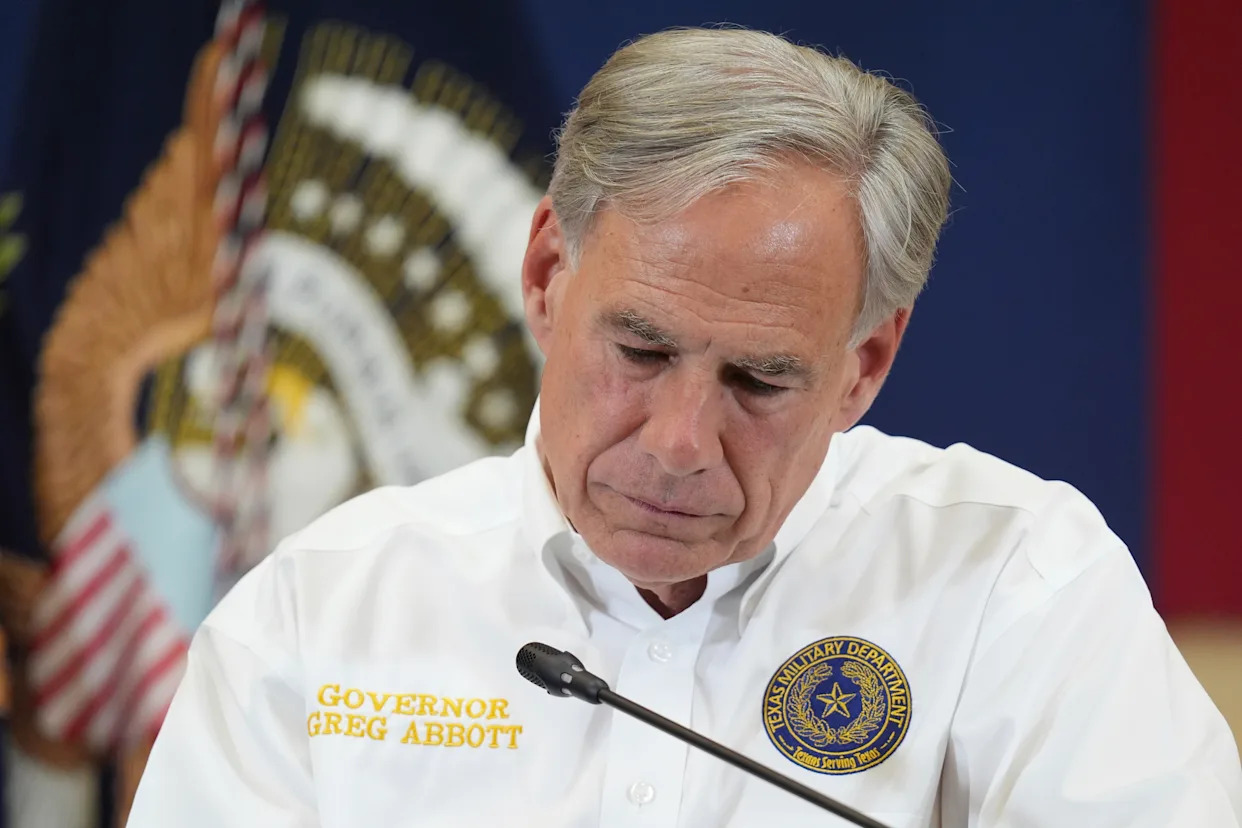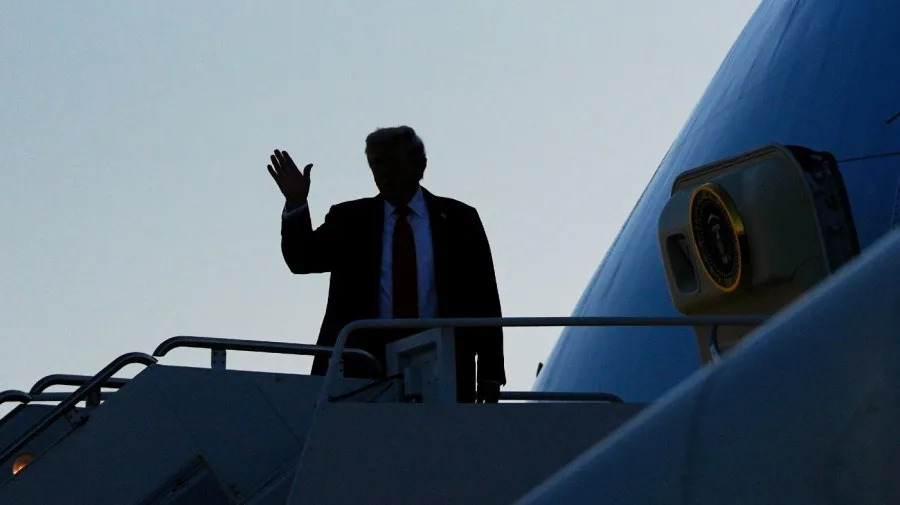Republican lawmakers trying to make good on President Donald Trump’s campaign promise to abolish the Education Department are prepping for legislative surgery instead of rolling out the guillotine.
Trump signed an executive order in March telling his Education secretary, Linda McMahon, to “facilitate” the closure of the agency she leads as a way to give states more control of the federal money for their schools. McMahon has also publicly embraced the president’s call to put herself “out of a job” and pushed out about half of the agency’s staff while exploring ways to move programs to other departments.
But closing the Education Department requires congressional approval. And despite being a target of conservative ire since its founding, shutting it down may be a tough sell for Republicans with poor school districts and states that depend on its legal guidance, civil rights enforcement and other support. That need for careful calculus has made it clear to the two top GOP education leaders on Capitol Hill that a more “rational” and piecemeal deconstruction of the agency is necessary.
While Trump has shown a preference for pushing massive domestic policy legislation through a Republican Congress reluctant to buck him, it was the administration’s weekslong hold on billions of dollars in school funding last month that drew the rare intraparty rebuke.
“We saw how difficult the One Big Beautiful Bill was to pass. It got passed, but when you get down to personal issues and individual districts that are related to education, it will be a little more difficult,” said House Education Chair Tim Walberg (R-Mich.), one of the lawmakers who would shepherd legislation to close the agency. “It has to be done by little bills, taking on individual issues, one at a time, and seeing how far we get.”
Classroom literature, diversity, admissions and academic performance became some of the political themes animating the GOP during the fallout of the pandemic — painting a bigger conservative target on the agency. But in addition to distributing funding to schools across the country, the Education Department enforces civil rights laws and manages college financial aid, like the Pell Grant, which provides money for students from low-income families. Those programs remain popular even as Trump and other Republicans point out how the agency has long presided over lackluster test scores in reading and math.
A piecemeal approach to collapsing the Education Department could allow lawmakers to make a public case for why certain programs, such as career and technical education, should be housed in other agencies, lawmakers and former officials say. It’s a strategy that could help Trump deliver one of his often-repeated campaign promises — eventually.
“People want proof of concept before they vote for a whole shebang, right?” Senate HELP Chair Bill Cassidy said of closing the agency.
“I’ve got to get Democrats on board because it’s going to take 60 votes to pass any legislation in the Senate, which means I need to have seven Democrats ... so you’d have to figure that out,” the Louisiana Republican said.
A White House spokesperson did not say whether Trump has a preference over how many bills it should take to close the Education Department. But Harrison Fields, special assistant to the president and principal deputy press secretary, said in a statement that, “President Trump is using his authority as Chief Executive to fulfill his promises to parents and students by returning education to the states, dismantling bureaucracy, and empowering families.”
McMahon, who is on a 50-state tour to make the case for “returning” schooling to state leaders, has embraced the agency's “final mission” and discussed the president’s goals to dismember it. Her agency has also issued guidance encouraging states to craft policies that circumvent federal law, with the secretary having authority to waive some statutory requirements governing K-12 schools.
The administration has weighed moving federal student aid operations to the Treasury Department or the Small Business Administration and programs supporting students with disabilities to the Department of Health and Human Services.
That hasn’t stopped her from strategizing with both Walberg and Cassidy. Cassidy, who met with the secretary over breakfast just before the August recess, said the two discussed “things that don't have to be done by the Department of Education that are already being done by other departments.”
The Louisiana Republican said a “dual mandate” like workforce development programs at the Education and Labor departments could be consolidated at the latter.
“The ultimate desire is to leave more back there [in the states] without bringing them to Washington and that's the intention about right-sizing, de-powering — whatever term we want to use about the Department of Education — until there are the votes necessary for Congress to pass a bill that abolishes the department,” said Walberg, who had his own meeting with McMahon. “We don't have those votes now.”
McMahon is “interested in responsibly winding down” the agency, Education Department spokesperson Ellen Keast said in a statement, noting that the secretary is “committed to working with Congress and key stakeholders to accomplish this goal."
The department has already begun shifting management of career and technical education programs to the Labor Department after the Supreme Court green-lighted the Trump administration’s efforts to cut Education staff.
“My goal really is to make sure that we can transfer different jobs that are being done at the Department of Education” to other agencies, McMahon said on Fox News in July after her department resumed its interagency agreement with the Labor Department.
“We had our IDEA funding and our Title I-A funding prior to the Department of Education. At that point in time it went through HHS,” she said, referring to the Department of Health, Education and Welfare. HEW became the Department of Health and Human Services after the Education Department was created. “Would that be a place for it to go now?”
Former department officials say a multi-bill approach will allow lawmakers to make the case for moving certain programs to other agencies.
“Breaking it up into smaller bills, it will take longer, potentially, but maybe you can hit the lowest-hanging fruit more quickly,” said Diane Jones, a deputy undersecretary at the Education Department during Trump’s first term.
“I think we have to look and figure out which agencies they would move it to, how does that align with authorizing and appropriating committees and what's possible, you know? I also think that they want to do it thoughtfully and so there are some programs that are going to be a little more complicated,” said Jones, who also served in former President George W. Bush’s Education Department and worked on Capitol Hill.
And some former officials and advocates for shutting the agency down believe that if blue-state education leaders are assured that federal funding will keep flowing — and with fewer restrictions attached — even if the agency disappears, they may be able to convince their U.S. senators to go along.
“A lot of Democrats will find this a very appealing idea to just block grant, cut the strings, let states do things the way they think is best,” said Jim Blew, who served as a top policy aide to former Education Secretary Betsy DeVos.
But even moderate Senate Democrats, including ones that have sided with Republicans on other issues, will need a lot of convincing.
“Eliminating the Department of Education would harm America’s must vulnerable students — those in rural areas, poor communities, and with special needs,” Sen. Ruben Gallego (D-Ariz.) said in a statement to POLITICO. “I won’t let Trump and Congressional Republicans get away with that, whether it’s by one bill or several.”
There’s also a sense that some Republicans may resist deep cuts as well.
The Senate Appropriations Committee advanced a bipartisan spending billthat seeks to stop many of the Trump administration’s efforts to de-power the agency, like plans to reject block grants for certain K-12 programs and those that support students with disabilities. The spending bill, which awaits passage by the full Senate and needs to be considered the House, also includes language preventing the Education Department from transferring funding for schools with high-needs and students with disabilities to other agencies.
Blew said there’s also a wildcard: whether Trump backs a multi-bill approach.
If the president directs Republicans to get rid of the agency in one big bill, Blew said Republican lawmakers are likely to fall in line.
“I don’t know why people keep underestimating the president. He’s shown that he can do this,” said Blew, co-founder of the Defense of Freedom Institute, a conservative advocacy group. “The unknown factor, that once he leans in, I think we’ll be surprised how many people end up voting for it.”






Comments